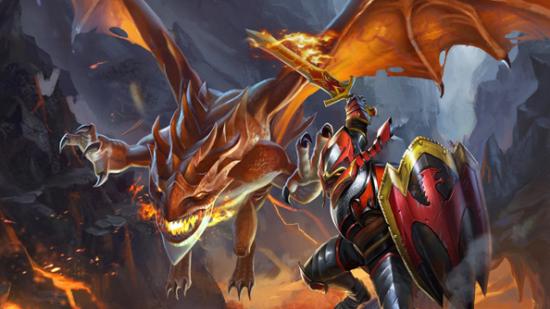“Over the past several months we’ve been working on improving matchmaking,” write Valve. “The next major update will add a ranked matchmaking feature to the game. This mode is aimed at experienced players who want to play in a more competitive environment and know their matchmaking rating (MMR). Dota 2 matchmaking has always calculated MMR and used it to form matches; in ranked matchmaking we make that MMR visible.”
By letting you see your MMR Valve are giving you a quantified rank that you can compare to your friends. While you may have suspected who the best player on your team was now you can tell from a score that’s been generated as a result of every one of the games they’ve played.
Valve have revealed some details of the new ranking system:
-
Ranked matchmaking is unlocked after approximately 150 games.
-
All players in the party must have unlocked the mode.
-
Currently, only All Pick, Captains Mode, and Captains Draft are available.
-
You may not participate in ranked matchmaking while in the low priority pool.
-
Coaches are not allowed in ranked matchmaking.
-
Matches played in normal matchmaking do not impact your ranked matchmaking MMR, and vice versa.
-
Your ranked MMR is visible only to you and your friends. The MMR used for normal matchmaking is not visible.
-
When you first start using ranked matchmaking, you will enter a calibration phase of 10 games. During this time, your ranked MMR will not be visible.
The MMR is more complex than simply a win/loss ratio, though that is the “primary criteria”. “After each match, we update your MMR based on what happened in that match,” write Valve. “In general, when you win, your MMR will go up, and when you lose, your MMR will go down. Win/loss is the primary criteria used to update MMR, but individual performance also plays a role, especially when our uncertainty about your MMR is high. It is possible for an individual MMR to increase after a loss or decrease after a win, but in general the winning team’s average MMR will increase and the losing team’s MMR will decrease.”
On top of the actual data taken from the match there’s a parallel system that’s making predictions of how well you will perform in a match. If the prediction proves accurate then the system knows it’s got you pegged and your ranking is accurate.
The ranking’s are then used to create a close to balanced game in matchmaking. The exact ways in which the MMR is applied is like so:
-
The teams are balanced. (Each team has a 50% chance to win.)
-
The discrepancy in skill between the most and least skilled player in the match is minimized. This is related to team balance, but not the same thing.
-
The discrepancy between experience (measured by the number of games played) between the least experienced player and the most experienced player is minimized. More on this below.
-
The highest skill Radiant player should be close to the same skill as the highest skill Dire player.
-
Each team contains about the same number of parties. For example, the matchmaker tries to avoid matching a party of 5 against against 5 individual players.
-
Players’ language preferences contains a common language. Lack of a common language among teammates’ language preferences is strongly avoided. Lack of a common language across the whole match is also avoided, but less strongly.
-
Wait times shouldn’t be too long.
“The matchmaker seldom achieves all of those goals perfectly. For any potential match, the matchmaker assigns a quality score for each of the criteria above and then takes a weighted average. When the overall quality score exceeds a threshold, the match is considered “good enough” and the match is formed.”
The post goes into depth about how Valve use masses of accumulated data to adjust their prediction model. Including how they found out that players in parties of friends will play better than when they’re soloing. Definitely read it if you like your statistics.
